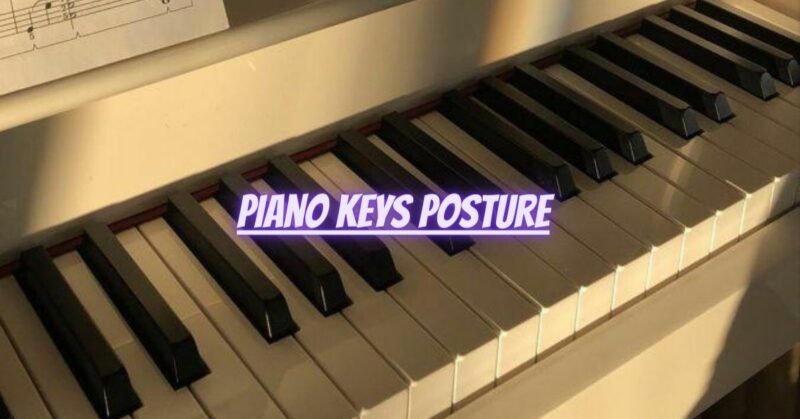Proper piano keys posture is essential for pianists of all levels, as it forms the foundation for effortless and graceful playing. The way a pianist positions their body at the piano greatly impacts their comfort, endurance, and overall performance quality. In this article, we’ll explore the significance of maintaining correct piano keys posture, the benefits it offers, and practical tips to achieve an optimal playing position.
Why Does Piano Keys Posture Matter?
Maintaining the correct posture at the piano is crucial for several reasons:
1. Physical Comfort: Proper posture promotes physical comfort during extended practice sessions and performances, reducing the risk of strain or injury.
2. Improved Technique: Correct posture allows for greater control over hand and finger movements, leading to improved technical execution and fluidity on the piano keys.
3. Enhanced Sound Production: Optimal posture enables pianists to produce a more resonant and expressive sound, utilizing the full potential of the instrument.
Elements of Proper Piano Keys Posture:
1. Seating Position: Sit comfortably with your back straight and your feet flat on the floor. Adjust the bench height so that your forearms are approximately parallel to the floor when your hands rest on the piano keys.
2. Hand Placement: Keep your hands rounded and relaxed, with your fingers naturally curved. The weight of your arms should be supported by your fingers, not by tension in your shoulders or wrists.
3. Elbow Position: Position your elbows slightly away from your body, creating an open angle between your upper arms and forearms. Avoid collapsing or squeezing your elbows.
4. Distance from the Piano: Sit at a comfortable distance from the piano keys, allowing your arms to move freely without leaning forward or backward.
5. Wrist Alignment: Keep your wrists level with your forearms, avoiding excessive upward or downward bending. The wrist should be relaxed and flexible to facilitate smooth playing.
6. Body Alignment: Maintain a balanced and centered body alignment while playing. Avoid slouching or leaning to one side, as it can lead to tension and discomfort.
Practical Tips for Achieving Proper Posture:
- Warm-Up Exercises: Begin each practice session with gentle warm-up exercises to loosen your muscles and prepare your body for playing.
- Regular Breaks: Take short breaks during extended practice sessions to stretch and relax your muscles. This will help prevent fatigue and maintain good posture.
- Mirrors or Video Recording: Use a mirror or video recording to observe your playing posture from different angles. This visual feedback can be valuable in identifying and correcting any issues.
- Ergonomic Bench: Invest in an adjustable and ergonomic piano bench that allows you to customize the height to suit your posture.
- Awareness: Pay attention to your body while playing, and make adjustments as needed. Avoid unnecessary tension or rigidity in your arms, shoulders, and back.
Conclusion:
Proper piano keys posture is the key to unlocking your full potential as a pianist. By maintaining a balanced and relaxed position, you can play with greater ease, comfort, and expression. Consistent practice of good posture will not only improve your playing technique but also enhance the musical experience for both you and your audience.
Remember, the journey to mastering the piano is not just about learning the notes, but also about developing a strong and healthy piano keys posture that allows you to connect with the music and express yourself with grace and finesse. Embrace the importance of posture in your piano playing, and you’ll reap the rewards of effortless and enjoyable music-making. Happy playing!


